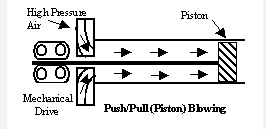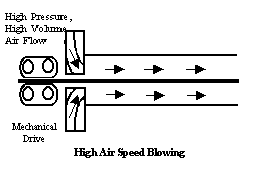How Much Does Fiber Optic Cabling Installation Cost?Posted by Fatih Batal on January 9th, 2021 How Much Does Fiber Optic Cabling Installation Cost?On average, fiber optic cable installation costs to per 30cm depending on the fiber count. It’s very difficult to estimate an exact price for an entire building to be wired, however an example would be ,000 to ,000 for a building with 100 to 200 drops. fiber backbone cabling is somewhat more expensive up front than copper cabling, but the greater capacity and reliability of fiber can actually reduce long-term costs. What is Fiber Optic Cable? Fiber optic cables are composed of strands of glass or plastic fiber that are as thin as a human hair. Surrounding the center glass core is cladding material and a buffer coating. Unlike traditional coaxial and twisted pair cable, which transmit electronic signals, fiber backbone cabling transmits light. This gives fiber cables the following advantages:
Fiber Optic Cable Considerations
Average Costs
Is there Any Way To Reduce Off Fiber Cable InStallation Cost For long Distance Outdoor Application? Yes, the answer is Cable Blowing Machine. High Air Speed Blowing, Air-Assist, Push/Pull Installation, Air Blown Cable, and Cable Jetting; all describe new methods to get cable into conduit using air. To date, the primary use of these methods has been to install fiber optic cable. Air-assisted fiber optic installation was developed and explored in the Netherlands as well as the United Kingdom in the 1980’s. While blowing methods are used to install individual fibers in tubes in LAN’s, this article will focus on the outside plant installation of jacketed, multi-fiber cable in duct. While this is typically underground duct, blowing will work for aerial duct installations as well. What is Air Blowing?Outside plant personnel are very familiar with the pulling method of installing cable. Thread a line through the duct, attach the line to the cable, and pull or tug the cable through the duct. The force needed to pull the cable usually comes from a capstan or hand-over-hand pulling of the rope. This force is needed to overcome the cable’s frictional resistance to movement. Length of installation is limited by the maximum force allowed on the cable. Air-assisted installation must overcome the same frictional force to move cable, but it does this in a very different way. The force in air blowing first comes from a mechanical device which pushes the cable; and second, from the force of moving air on the cable jacket, or alternatively, the force of air on a piston, missile, or carrier at the front end of the cable. These two variations of air blowing are diagrammed below:   While the pushing device is common in both methods, the purpose of the airflow through the conduit is different. In the high air speed blowing (HASB) method, the conduit is wide-open, and high air volume (300-600 cfm) blows through it. This “wind” pushes on the cable and advances it forward at whatever speed the pusher will support. There is no pulling force on the front end of the cable, only a mechanical pushing force at the back and an air drag force distributed along its length. The piston (push/pull) method attaches a missile or carrier to the front of the cable. The missile is pushed through the conduit by the air pressure force, and the missile pulls on the cable, thus the term push/pull installation. Because the conduit is blocked, or at least partially blocked, by the piston, this method does not require as much air flow as the high air speed method, and flows of 200 to 300 cfm are typical during push/pull piston installation. Pulling Vs BlowingWhile all types of cable can be blown into duct, blowing is particularly useful for placing outside plant fiber optic cable. Fiber optic cable is lightweight and flexible. Long, uninterrupted lengths of installed cable are desired. Both these factors play to the strengths of the blowing methods. In pulling, when a cable goes through a conduit bend, the pulling force on the cable actually pulls the cable into the bend. An exponential frictional force is created that is many times greater than what would occur with just the weight of the cable. Thus, an accumulation of bend angles greatly reduces possible pull length. But cross-country fiber optic pulls don’t have a lot of bends, or do they? Continuous flexible duct introduces “hidden bends.” These are inherent undulations or waves from reel memory as sketched here. While these waves can be minimized, they can’t be completely eliminated. Typical displacements of a few inches to a foot increase pulling tension by factors of 3 to 200. Reference [1] presents theoretical detail on the duct wave effect and its magnitude. Maximizing distance in fiber optic pulling means minimizing duct undulations. Thick walled innerduct with a diameter of 2 inches or more can be placed “straighter” than 1 inch or 1.25 inch duct, but at a cost premium. Multi-cell ducts keep innerducts straight with a rigid exterior, again with a cost and labor add-on. Plowed duct is straighter than trenched duct. In fact, pulling cable into open trenched innerduct is not practical. The amount of undulation simply makes pull lengths too short. Duct bends, including undulations, do not limit blowing processes, especially HASB, as much as they do traditional cable pulling. In HASB, the cable is not pulled into the bend by a large pulling force, but rather pushed through the bend by a lower, local air pushing force. In push/pull blowing, the pulling from the piston is partially offset by the pushing force from the mechanical pusher. This somewhat offsets the effects of bends. A more detailed analysis of the bend performance differences in HASB versus push/pull can be found in [2]. Field Comparison and EconomicsBlowing processes generally install cable into duct at a higher speed than pulling. Economics can be favorable, especially on large jobs where the cost of equipment can be amortized. Field crews report as much as 50,000 feet of cable installed per day. General cost factors are presented below:
Long, uninterrupted lengths of blown cable can be installed by cascading blowing units. This cascading, or using the units in series to make continuous runs, can minimize the need for figure-eighting. Blowing requires good planning and preparation, especially duct preparation. All of the units require seals sized to the cable to prevent leakage from the pressure chamber around the entering cable. Properly sized seals should be obtained before starting the job. Like it? Share it!More by this author |


